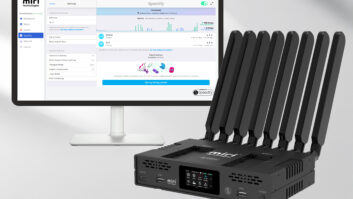If the tech company TiVo were a television series, it would be one with a fanatical but small audience, trying anything — special guest stars, new time slots — to attract a mainstream audience and stave off cancellation.
Founded in 1997, TiVo helped introduce consumers to the idea of tossing out their videotapes and instead using a hard drive to digitally record the shows they wanted to watch.
TiVo made it easy to pause live broadcasts and skip ads, and the question, “Did you TiVo that?” entered the lexicon.
But 10 years later, as it heads to Las Vegas for the 2007 International CES, the company is introducing new features, partnerships and advertising programs, trying to stay on top of the industry it helped spawn.
In its most recent quarterly report, TiVo counted 4.4 million subscribers — out of an estimated 16 million homes that now use digital video recorders.
“TiVo is becoming a classic business school case study,” said Steve Frankel, an analyst who follows the Silicon Valley company for the investment bank Cannacord Adams. “They invented the category of DVRs and they didn’t capitalize on it. They’re definitely floundering, trying to find a way to be a healthy stand-alone business.”
But CEO Tom Rogers, a former NBC exec who took the reins in mid-2005, says the company is making progress.
“I think a lot of people were counting TiVo out a year ago, but we’ve made a lot of strides,” said Rogers. “We’ve gone from being an island, in people’s view, into a collaborative company that wants to have partnerships with all kinds of media players.”
TiVo won an important legal victory last April, when a Texas jury found that EchoStar, the satellite TV company, had infringed on TiVo’s patents. If the judgment, which awarded TiVo $90 million in damages, holds up on appeal, TiVo could extract licensing revenue from other companies that make and market digital video recorders.
“If I were TiVo, I’d be a little bit more aggressive in trying to do deals with other operators or manufacturers who are doing their own DVR solution, like Time Warner,” said Jimmy Schaeffler, chairman of The Carmel Group, a media research firm.
Meanwhile, TiVo launched its first DVR capable of recording high-definition content in September, priced at $799. The company also experimented with giving away its less-sophisticated boxes on its Web site and in retail locations, hoping to build its subscriber base. (A subscriber would pay $199 in fees for a year’s subscription.)
The company also announced a fusillade of new features, including the ability to share home movies over the Internet, or obtain Internet-based programming from content partners like CBS, Forbes, iVillage, the NBA and The New York Times. (At CES, several TiVo rivals are expected to unveil similar Internet-connected video services.)
Though TiVo doesn’t yet offer subscribers the option of requesting full-length movies or other fee-based programming, TiVo execs say that’s a possibility.
A 2004 partnership with Netflix to deliver movies never bore fruit.
“Over the last nine months, we’ve introduced a bunch of truly differentiating features, like getting video onto your iPod, or controlling your TiVo from a wireless phone,” Rogers said. “We think we could put together effective marketing around the notion that it’s not a TiVo unless it’s a TiVo — that we are different from the generic DVR.”
But most of the new features are only accessible to about 500,000 late-model TiVo owners whose devices can be linked to the Internet.
Initially seen as a villain by networks and their advertisers for allowing viewers to easily hop-scotch over ads in precise 30-second increments, TiVo is now trying to position itself as an ally.
One new offering allows advertisers to communicate with viewers at the end of a program, just as the TiVo presents the option to delete or save a show. Burger King, MasterCard and General Motors have already begun experimenting with the approach, which TiVo terms “program placement.”
“We’re now in an era of consumer control,” Rogers said. “They’re going to watch the ads when they want, if they want, on their own terms. We have built an advertising system that has creative access points that incentivize the consumer to check things out, request more information and stop fast-forwarding.”
Soon cable operators Comcast and Cox plan to roll out DVRs that use TiVo’s technology that will funnel new revenues to the company.
Rogers says that subscribers who come to TiVo via cable ops have higher profit margins. And a larger audience could help TiVo sell its new advertising services, observed Forrester Research analyst Josh Bernoff.
But Frankel has written in a research note that while TiVo offers “hands-down the best user interface, we fail to see a business model that can drive sustainable profitability.”
Bernoff says he has given up predicting that TiVo will be acquired.
“I predicted that three or four times in the last seven years,” Bernoff said. But Schaefller seems to have picked up the thread: “I think they get bought out in the next year or two,” he said, adding, “the fuse is running on Tom Rogers.”
Rogers argues that as new kinds of content make their way from the Internet to television, and as viewers’ relationship to advertising changes, TiVo will be well-positioned. Announcements at CES could lend the company momentum.
“The world of television choice, whether it is home video or the most premium content, will all be sitting on your TV set, integrated into one user interface, one search-and-navigation system,” Rogers said. “The question we ask here is, how do we make that a one-stop shop, a unified viewing experience?”
Articulating a vision has never been a problem for TiVo, a company that has indelibly changed television viewing. Achieving long-term profitability is a different matter.













